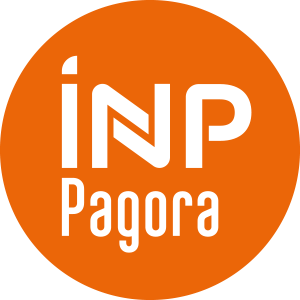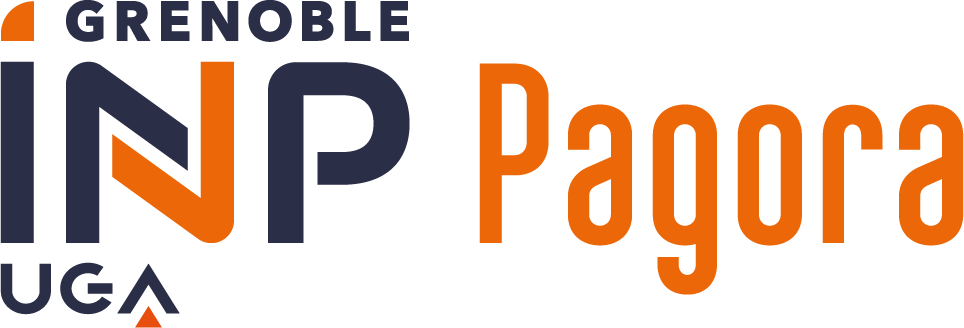Number of hours
- Lectures 9.0
- Projects -
- Tutorials 1.5
- Internship -
- Laboratory works 6.0
- Written tests -
ECTS
ECTS 20.0
Goal(s)
Learning outcomes :
- Master the operation of the offset process and in particular the interactions between the various phenomena involved;
- Know the materials and consumables (fdampening solution, plates, blankets) associated with this process (except inks);
- Know the characteristics and the operation of the various types of offset presses (sheet-fed, web);
- Recognize the printing defects related to these presses and to develop the method to diagnose them (observation, use of tools, interpretation);
- Optimize the implementation of the offset process.
Bernard PINEAUX
Content(s)
POUR L'ACCÈS AUX DOCUMENTS SUPPORTS, VOIR LE LIEN VERS LE SITE INTERNET CHAMILO DANS LA RUBRIQUE "BIBLIOGRAPHIE"/ FOR ACCESS TO SUPPORT DOCUMENTS, SEE THE LINK TOWARD THE "CHAMILO" WEBSITE IN THE "BIBLIOGRAPHY" HEADING
Introduction
A-The offset process: dampening, inking, transfer.
B-Densitometry
C-The associated materials and consumables: plates, blankets, dampening solution (inks are treated in a dedicated course).
D-Offset presses.
E-Defects characteristic of this process.
If time allows, one session will be devoted to comparing prints using densitometric measurements.
Three practical sessions are carried out on a SHOTS (SHeetfed Offset Ttaining Simulator) press simulator and allow students to learn how to diagnose offset printing problems. This simulator is accessible online for a specific period of time, with a login and password for each student.
The first session is designed to learn how the simulator works and the diagnostic methodology.
The next two sessions place the students in production situations where the problems gradually appear. These two sessions are also supervised, to avoid the risk of getting stuck in a given situation.
Two modes of operation are possible:
1. The students connect to the simulator via their login, on a school computer (generally, 5 simultaneous connections are possible).
2. The session is done remotely, by videoconference.
The availability of the software (and especially the number of possible simultaneous connections) or the constraints of the schedule may modify this organization.
A one-hour plenary session allows for an assessment of the difficulties encountered during the work carried out and of the knowledge acquired through this approach.
Depending on the health constraints in force, the sessions can be held at a distance.
Prerequisites- Introduction to print communication engineering (densitometry part).
- Understanding of English (teaching given in English).
Accessibility for people with disabilities: consult us
- Specific credits: this course brings 1.5 ECTS to students in ICI - Exchange Semester - AUTUMN
Evaluation : Description of evaluation conditions in the ‘Evaluation’ field (3h)
Resit : Written exam (3h)
The course is taught in English.(Course and exam language adapted to the student profile.)
This course is assessed jointly with the flexography and digital processes courses. The overall mark is calculated as follows:
- 1 written exam mark (60%)
- 1 flexography practical course mark (15%)
- 1 mark for Offset practical work (10%)
- 1 digital printing process practical course mark (5%)
In the event of health constraints, only the written exam will be taken remotely, in the form of an online multiple-choice questionnaire.
Only the written exam can be made up in session 2.
The exam may be taken in french or in english
The course exists in the following branches:
- Curriculum - International Semesters - Semester 7 (this course is given in english only)
- Curriculum - Pagora Engineer - Student - Semester 7 (this course is given in english only)
- Curriculum - Pagora Engineer - Apprentice - Semester 7 (this course is given in english only)
Course ID : 4FMT1093
Course language(s): 
You can find this course among all other courses.
Environmental security
Les consignes relatives à la sécurité et à l'environnement sont évoquées en tant que de besoin. Les enseignements ont lieu dans des salles de cours ou des salles informatiques.
Penser à éteindre ordinateurs et lumières en quittant la salle.
Safety and environmental regulations are mentioned as needed. Classes are held in classrooms or computer rooms.
Remember to turn off computers and lights when leaving the room.
Si travail autour d'une presse industrielle: respect des consignes de sécurité détaillées par l'enseignant avant les travaux.
Cheveux longs attachés autour des machines, pas de foulard, pas d'habits flottants.
Les éventuels effluents sont collectés pour être évacués par des prestataires spécialisés / interdiction d'évacuer les effluents dans les réseaux communs.
If working around an industrial press: respect the safety instructions detailed by the teacher before the work.
Long hair tied around the machines, no scarves, no loose clothing.
Any effluents are collected for evacuation by specialized service providers / no effluents are allowed to be evacuated into the common networks.
SIROST J.C. L'offset : principes, technologies, pratiques. Paris : Dunod, 2007.
MACPHEE J. Fundamentals of lithographic printing. Volume 1: Mechanics of printing. Pittsburgh : Sewickley : GATFpress, 1998.
Sites Web des constructeurs de presses. Press manufacturers' web sites.
Magazine Caractère (https://www.caractere.net/ ).
Certains éléments bibliographiques sont disponibles sur le site Internet Chamilo / some bibliographic elements are available on the Chamilo Web site :
https://chamilo.grenoble-inp.fr/main/document/document.php?cidReq=PAGORAA23FM05108&id_session=0&gidReq=0&gradebook=0&origin= (cours "Offset lithography" en 2e année - "offset lithography" course in 2nd year)
ou :
https://chamilo.grenoble-inp.fr/main/document/document.php?cidReq=3FMT2031&id_session=0&gidReq=0&gradebook=0&origin=&id=394783 (cours "Initiation aux procédés d'impression" en 1re année - Introduction to printing processes in 1st year)



